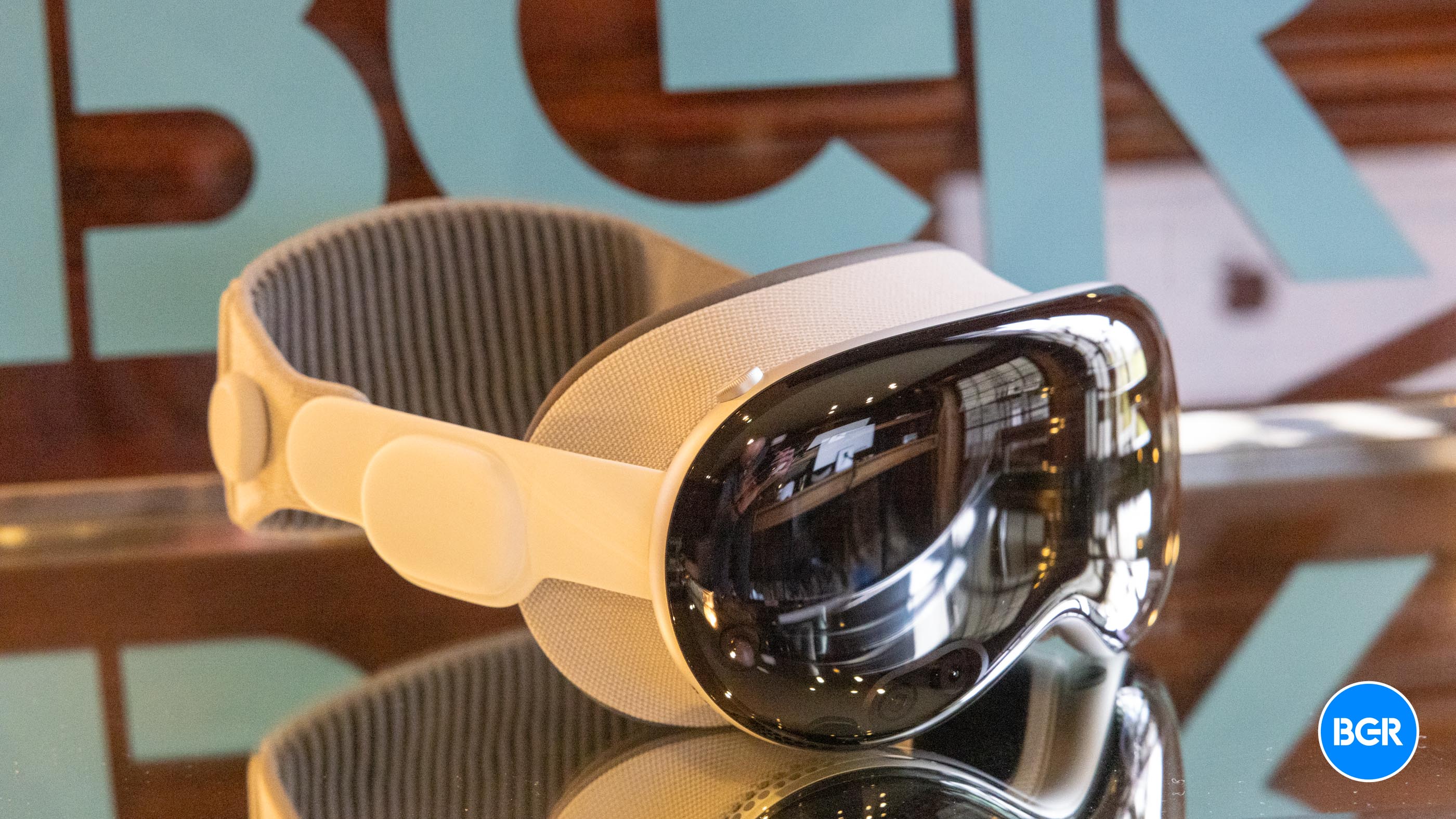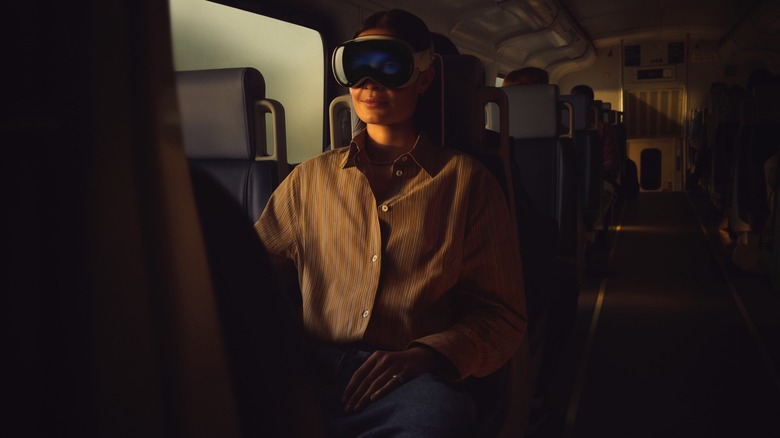Apple's Next Vision Pro Might Be Cheaper Because Of This Compromise
Apple has started expanding the Vision Pro's reach, with several Asian countries receiving the spatial computer last week. A few European markets are about to get the same treatment, marking the Vision Pro's big push beyond the US. But the spatial computer is far from becoming a best-selling device.
The $3,500 starting price is the most obvious roadblock for Apple. Then there's the company's inability to produce millions of units like it can with iPhones and other devices. But Apple isn't going to let up on the Vision Pro anytime soon. It's too important for the company's spatial computing plans, which might involve iPhone-connected AR glasses and, dare I say, a next-gen version of Apple Intelligence.
Reports have claimed that Apple is working on a cheaper Vision Pro device that might launch as soon as next year. The device will feature various compromises compared to the Vision Pro so Apple can make the price more palatable. One of them might concern the screen specs. A report from Korea already provides insight into the kind of displays Apple might employ inside the cheaper headset.
Korean news outlet The Elec has learned that Apple sent Requests for Information (RFI) documentation to both Samsung and LG. Apple is reportedly looking for OLEDoS panels that fit into the cheaper Vision Pro.
The two high-resolution displays inside the Vision Pro are placed in front of each eye. Apple reportedly sources the OLEDoS screens from Sony, which has a limited capacity. The supplier can make some 900,000 units per year with no plans for expansion.
This is a big bottleneck if Apple wants to increase its Vision Pro manufacturing plans. Apple can currently only make 450,000 units since each device requires two displays.

The report mentions some of the specs of the OLEDoS panels that Apple uses for the Vision Pro. We're looking at wOLED+CF panels from Sony or OLEDoS screens that feature a white-emitting OLED panel and a color filter that places the red (R), green (G), and blue (B) pixels on top of it so images can be created.
Sony's OLEDoS panels measure 1.42-inch, featuring a pixel density of 3,400 pixels per inch (PPI). A pair of OLEDoS panels cost $456, according to the report. That's almost a seventh of the Vision Pro's cost.
Apple now wants slightly larger panels, at 2.0 or 2.1 inches in size. The report says they'd feature a lower resolution, at only 1,700 PPI. This is an indication that Apple is looking for a different type of OLEDoS panel from Samsung and LG. The report speculates the screens might be used in a cheaper Vision Pro.
It's unclear whether LG or Samsung will manufacture such a display for a cheaper Vision Pro. However, The Elec says that Samsung will supply Apple RGB OLED screens rather than the wOLED+CF tech used in the current Vision Pro. Samsung's screen features built-in RGB pixels rather than using a white light source and a color filter on top of it.
Furthermore, MacRumors points out that Samsung and LG have both demoed OLED microdisplay tech at DisplayWeek 2024, which Apple might be interested in.
Samsung had an RGB OLED microdisplay on hand, while LG demoed a 1.3-inch 4K OLED microdisplay. These screens could significantly boost brightness on a future Vision Pro device. But they won't necessarily be available for a cheaper model.
The Elec notes that Samsung will provide Apple with RGB OLED panels for the Vision Pro in 2027 or 2028. Meanwhile, reports say Apple wants to launch a cheaper Vision in late 2025. By then, it'll need to find a supplier for its OLEDoS needs for that device.
